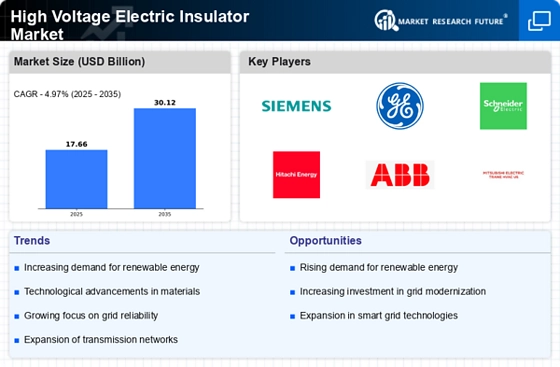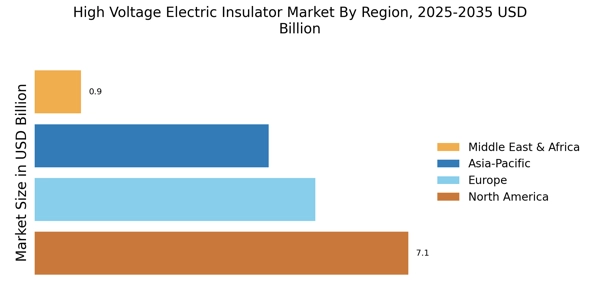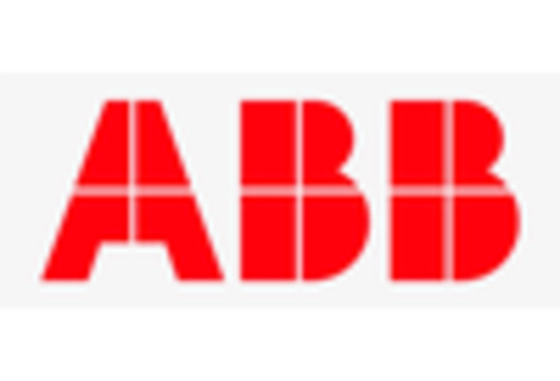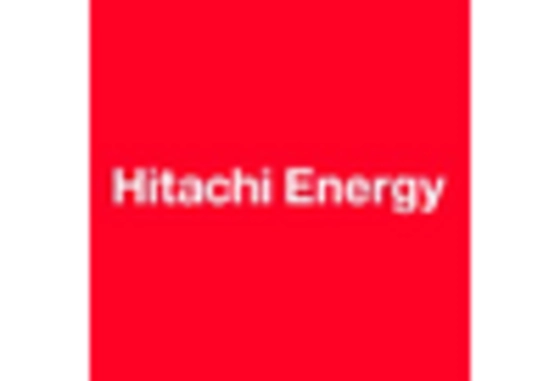Urbanization and Population Growth
Urbanization and population growth are key factors impacting the High Voltage Electric Insulator Market. As urban areas expand, the demand for electricity surges, necessitating the enhancement of power distribution networks. The increasing population in urban centers leads to higher energy consumption, which in turn requires more efficient and reliable power transmission solutions. Data indicates that urban populations are expected to rise by 2.5 billion by 2050, creating a pressing need for high voltage insulators to support the growing infrastructure. This trend is likely to stimulate market growth as utilities seek to upgrade their systems to accommodate increased demand.
Increasing Demand for Renewable Energy
The transition towards renewable energy sources is driving the High Voltage Electric Insulator Market. As countries invest in wind, solar, and hydroelectric power, the need for robust electrical infrastructure becomes paramount. High voltage insulators are essential for maintaining the integrity of power transmission lines that connect renewable energy sources to the grid. According to recent data, the renewable energy sector is projected to grow at a compound annual growth rate of over 8% in the coming years. This growth necessitates the deployment of high voltage insulators to ensure efficient energy transfer and grid stability, thereby propelling the market forward.
Infrastructure Development Initiatives
Infrastructure development initiatives across various regions are significantly influencing the High Voltage Electric Insulator Market. Governments are increasingly investing in upgrading and expanding electrical grids to meet rising energy demands. For instance, in several countries, substantial funding has been allocated for the modernization of transmission networks. This trend is expected to result in a market growth rate of approximately 6% annually. The need for high voltage insulators is critical in these projects, as they play a vital role in ensuring the reliability and safety of power transmission systems, thus driving demand in the market.
Regulatory Standards and Safety Compliance
Regulatory standards and safety compliance are increasingly influencing the High Voltage Electric Insulator Market. Governments and regulatory bodies are establishing stringent guidelines to ensure the safety and reliability of electrical infrastructure. Compliance with these regulations often necessitates the use of high-quality insulators that meet specific performance criteria. As a result, manufacturers are compelled to innovate and enhance their product offerings to align with these standards. This focus on safety and compliance is expected to drive market growth, as utilities prioritize the installation of reliable insulators to mitigate risks associated with electrical failures.
Technological Innovations in Insulator Design
Technological innovations in insulator design are reshaping the High Voltage Electric Insulator Market. Advances in materials science and engineering have led to the development of insulators that offer enhanced performance, durability, and resistance to environmental factors. For example, composite insulators are gaining traction due to their lightweight properties and superior electrical performance. The market for these advanced insulators is projected to expand as utilities seek to improve the efficiency and longevity of their transmission systems. This shift towards innovative designs is likely to drive competition and growth within the industry.


















Leave a Comment